I didn’t get into academic astronomy to travel, but I didn’t get into academic astronomy to avoid travel, you know what I mean?
I’m bringing the good ship Ph.D. into port in the very near future, and I have been to Chile some six times (should have been more, but thanks covid) without having seen more than observatories and airports (again, thanks covid).
After a month away from home I was exhausted and had a to-do list as long as my arm, but I decided if I didn’t take some personal travel now I never would. In the spirit of MagAO-X 2022B Day 3: An astronomer’s guide to Valparaíso, Chile, I present 2.5 days in Santiago de Chile.
I gratefully acknowledge the advice and suggestions of Dr. Matías Díaz (lately of drone-piloting fame) and the MagAO-X Chilean Cultural Attaché Dr. Susana Henriquez.
Day 0:
On Sunday the 19th, we left the observatory. A van transported us and the luggage of a one-month stay (multiplied by four people) from Las Campanas down to La Serena airport.
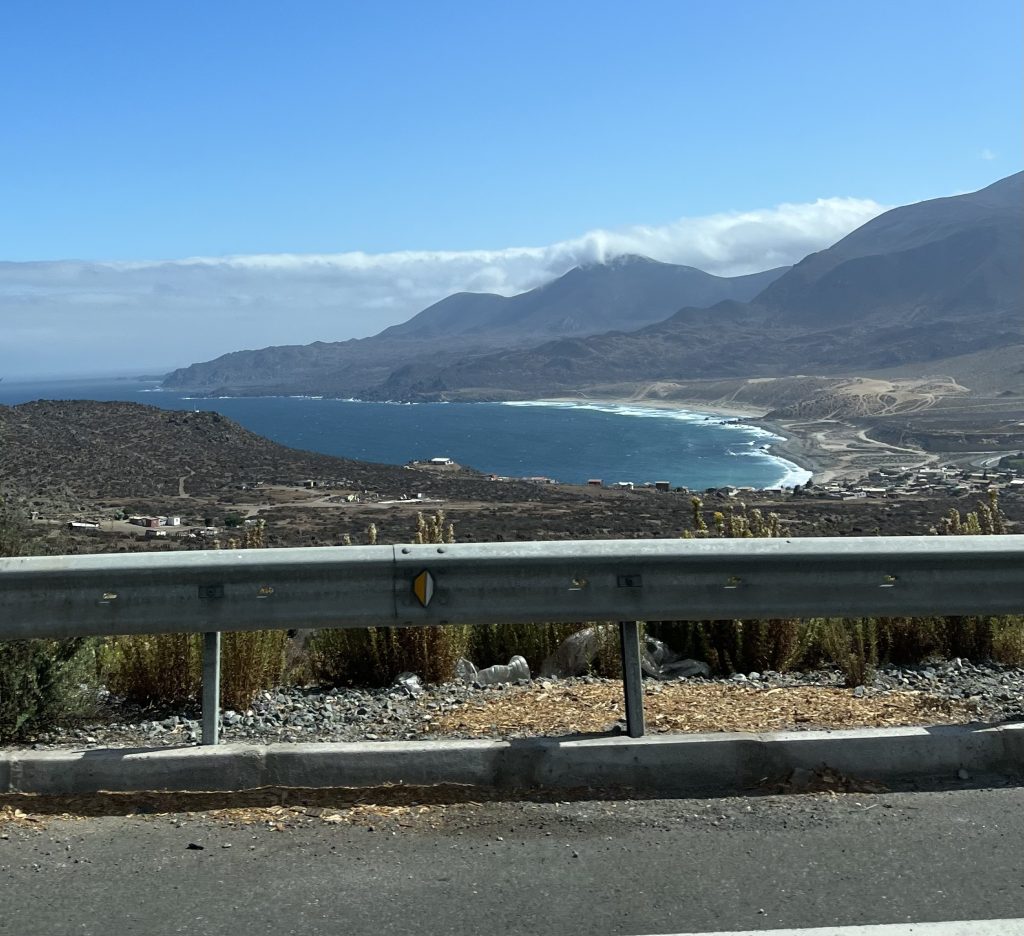
We obtained Kunstmann Torobayo (times four) and papas fritas, as is tradition.
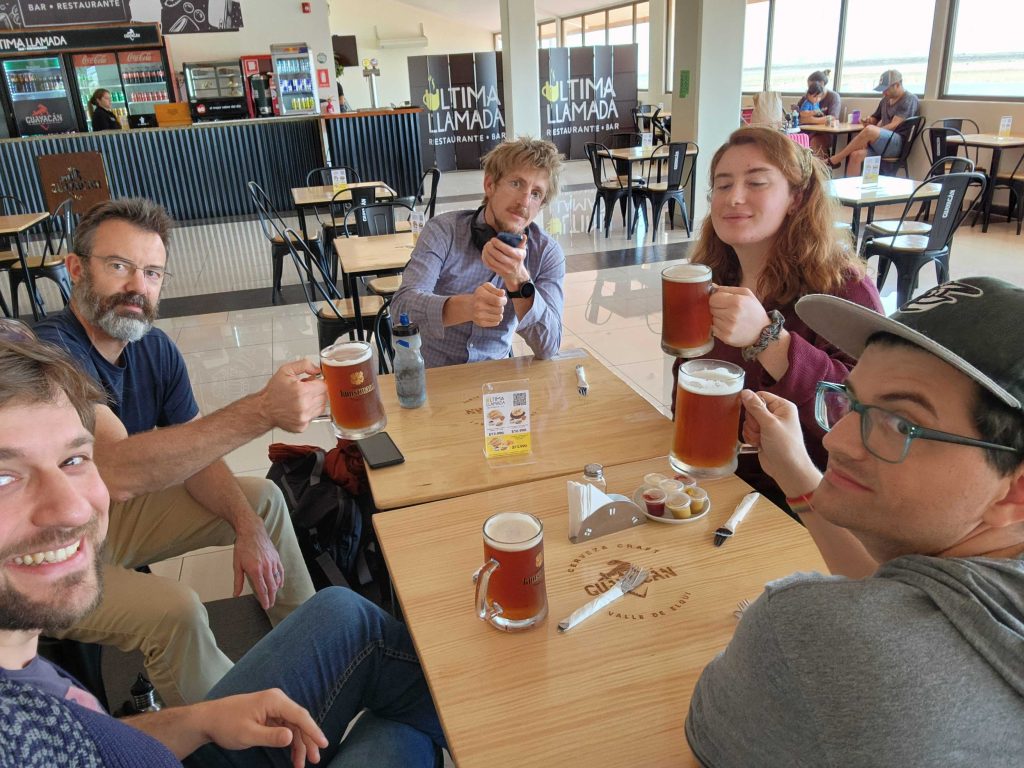
After a short hop to Santiago airport, I parted ways from the rest of the MagAO-X team.
Multiple sources warned me against taking a taxi from the airport, because they are known to inflate charges 2x or more for tourists. Instead, I opted for a taxi arranged by my hotel for US$45 (building in the “tourist tax”, since typical fares are closer to US$30).
This was supposed to include someone standing at arrivals to meet me, but—alas—he was at the wrong terminal. Whoops! We found each other, and I got to the hotel, Hotel Luciano K, around 4pm. There, I used the tiniest elevator you ever did see.
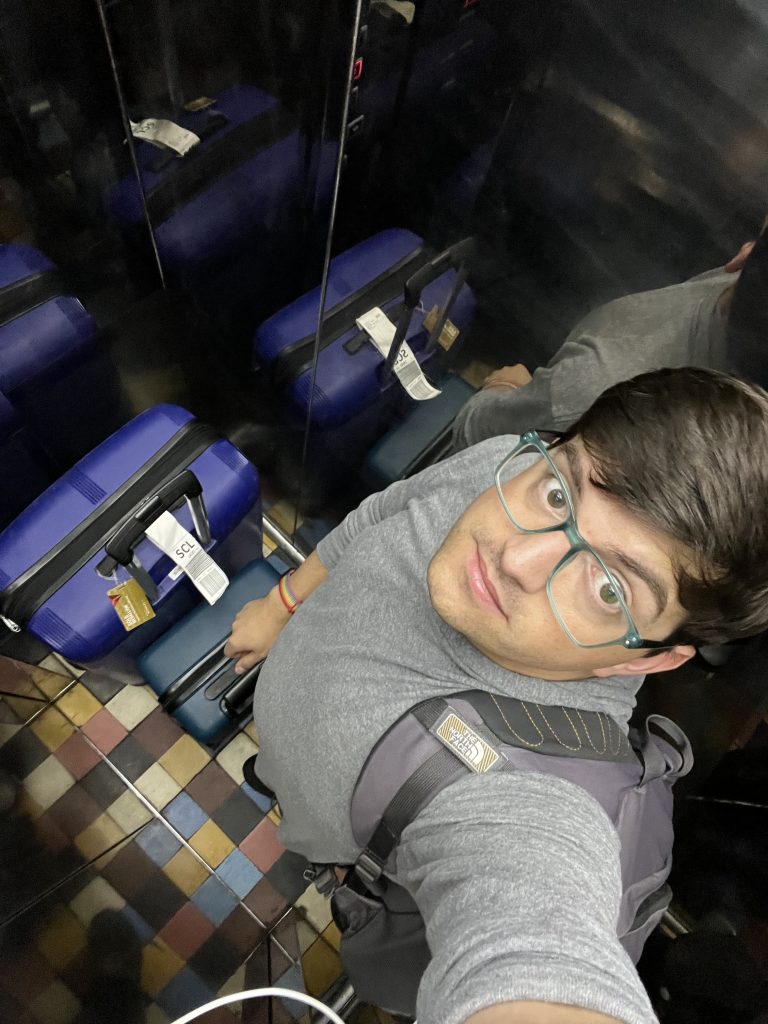
The building is a cool art noveau/eclectic style by Chilean architect Luciano Kulczewski built in 1927. No idea which artistic flourishes are original, but I was charmed.
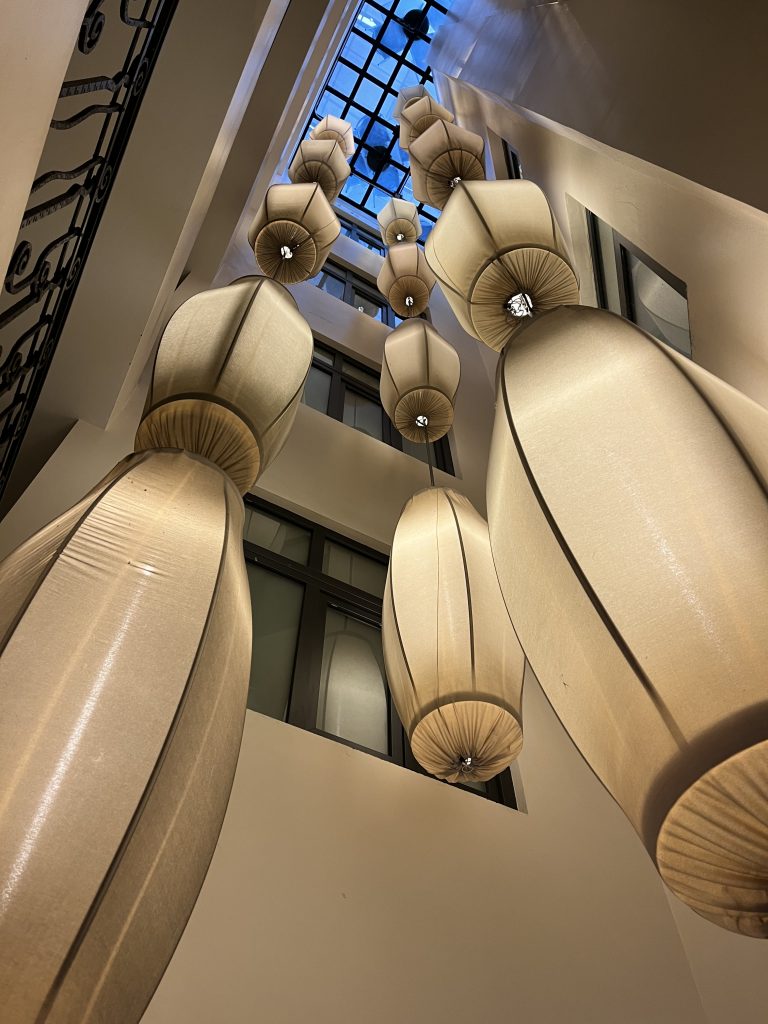
I arrived with many fine suggestions of things to do, but no plan per se. On Susana’s recommendation I headed for a location of Emporio La Rosa, independent ice creamery of Santiago.
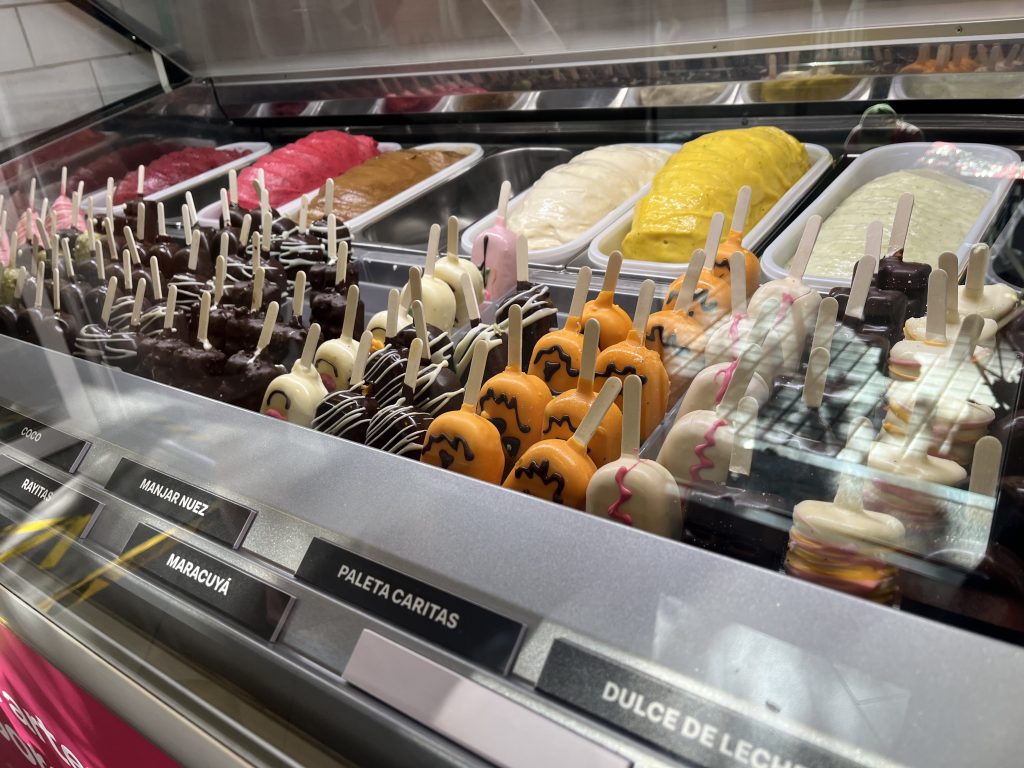
Amusingly, on the way there, I found posters advertising the upcoming Brian Jonestown Massacre show. (A band I had not thought about in years, until I used one of theirs as the blog song for Day 22.)
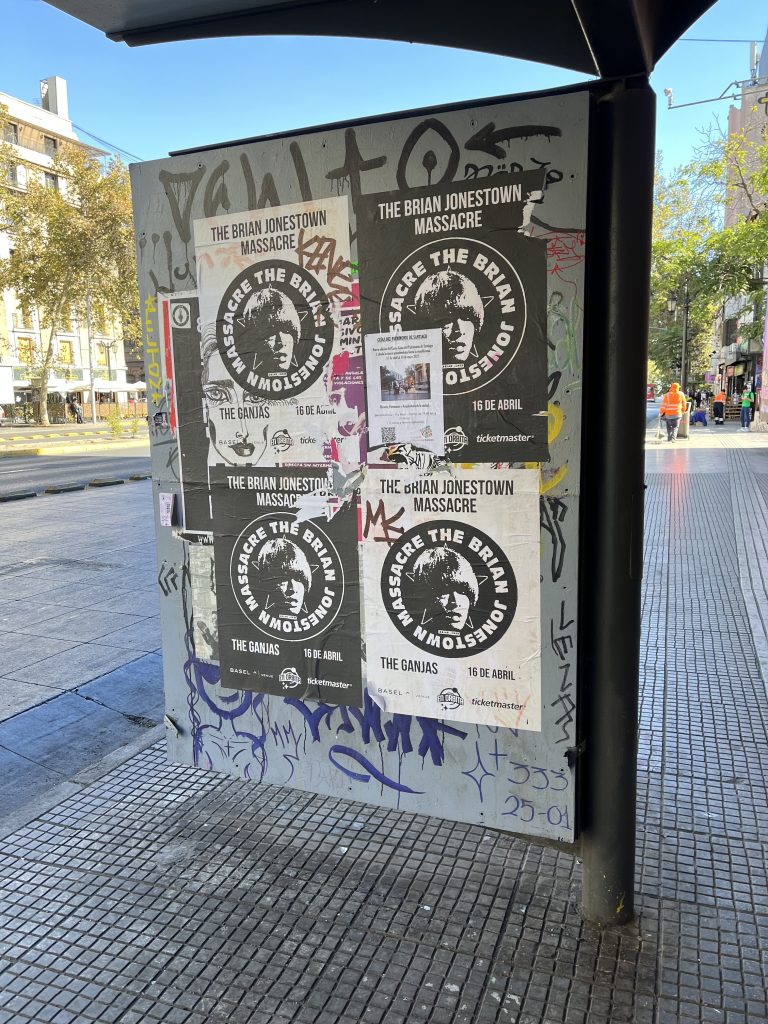
I took my ice cream to an outdoor seating area near an entrance of Centro Gabriela Mistral, a public arts center named for Chile’s first Nobel prize winner in literature (and not the last). The building was finished just before the coup d’etat, and the dictatorship took it over for their own purposes when they assumed power. Today, it has performance spaces and some (free to the public) galleries.
After finishing my ice cream, I wandered around for a bit. I had heard that Plaza de Armas can be a bit sketchy, and, while I had no trouble, I did notice a lot of police and a mobile… delinquent storage vehicle? It seems to be a popular place to protest, and when I saw one coalescing I legged it out of there. (It is illegal for foreigners to participate in protests in Chile, I read.)
I headed back towards my hotel and across the river.
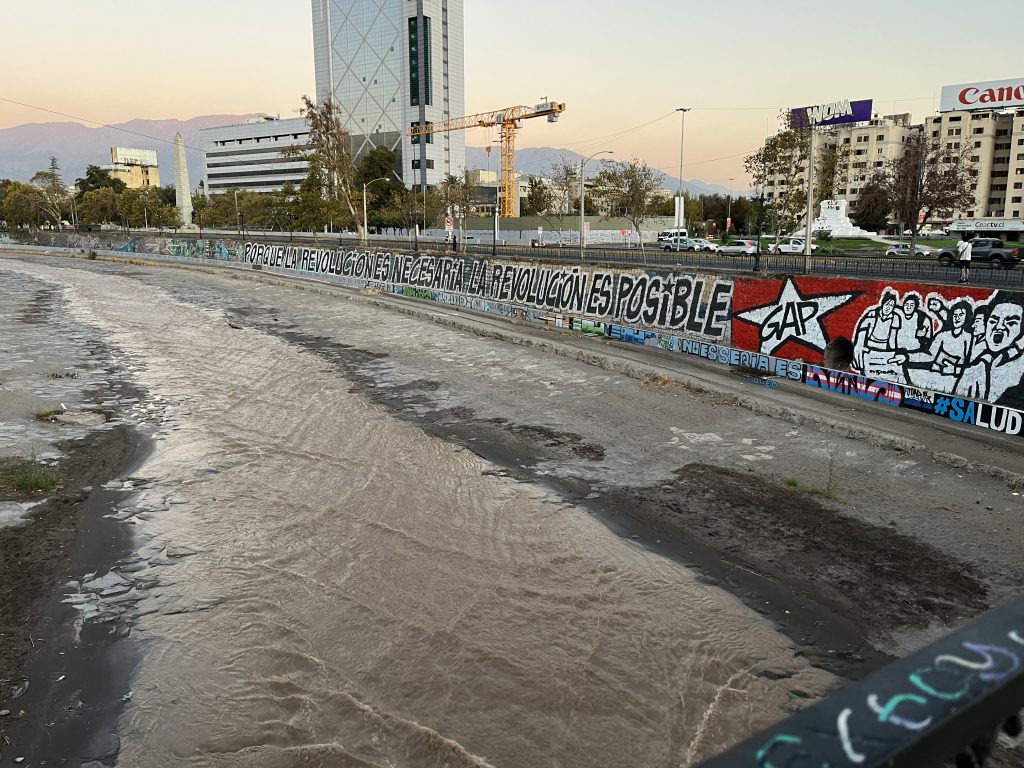
For dinner I went with Susana’s recommendation: Galindo’s. I didn’t get the recommended pastel de choclo (which looked good!) but instead opted for a churrasco italiano. (Italiano means avocado and tomato; I don’t make the rules.)
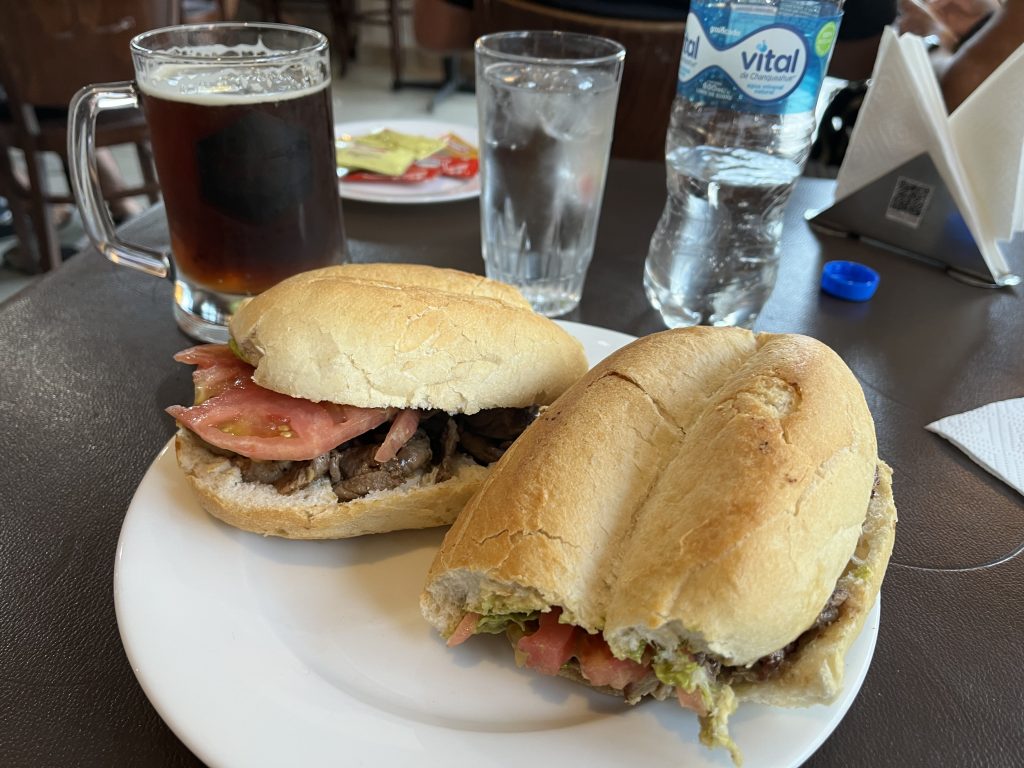
Of course, while I was doing this, my compatriots were still waiting to board their flight back to the US. The pisco sour in the airline lounge (or the budget lounge, a.k.a. Ruby Tuesday) is another tradition of the trip back, so I went back to my hotel and had one at their bar in solidarity.
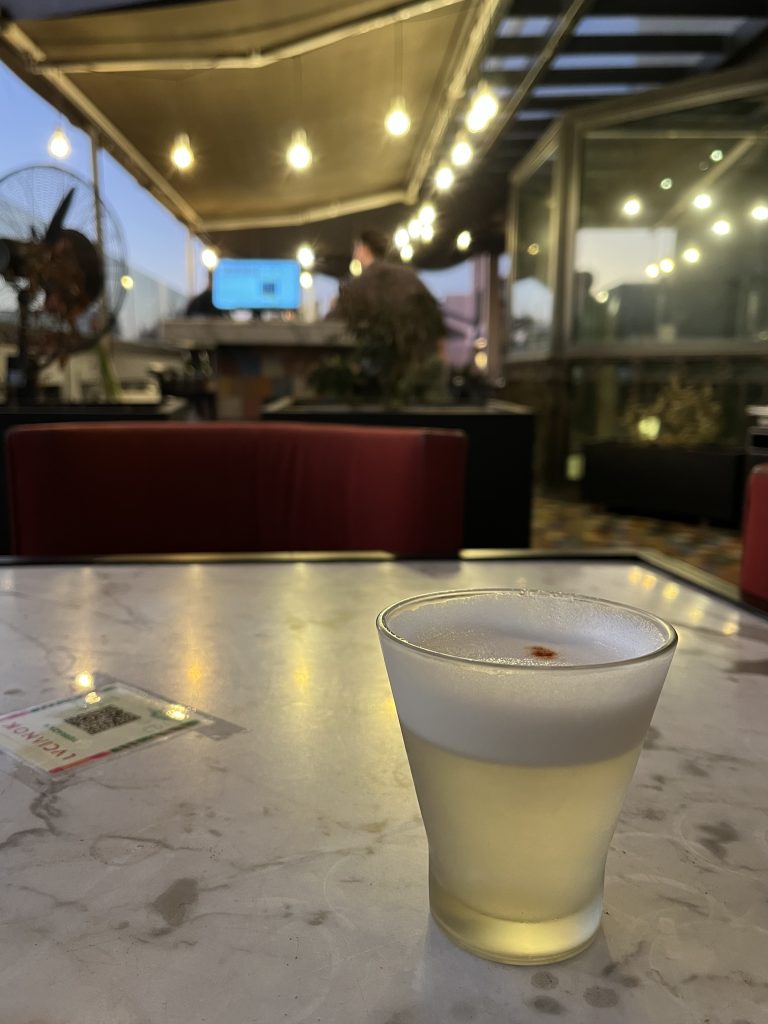
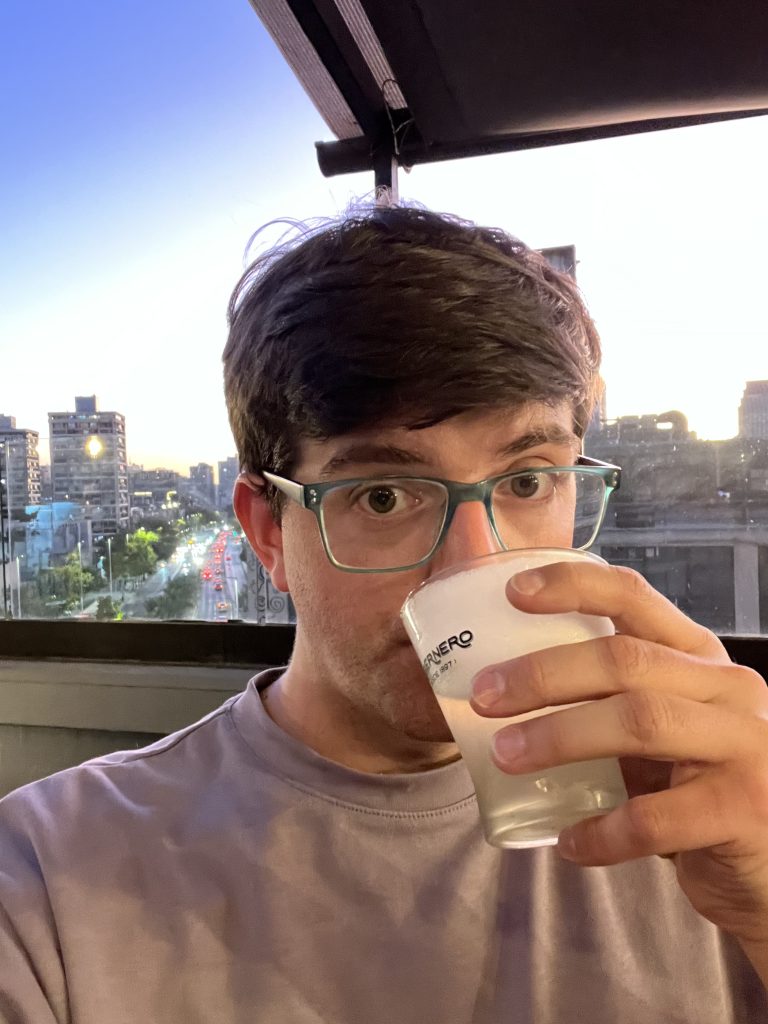
Day 1:
Residing at Las Campanas Observatory, and without broader knowledge of Chile, I often wondered: is this a “Chile thing,” or a “Las Campanas thing.”
One more data point for “Chile thing”: the exact same breakfast cereal at the hotel buffet as they stock in every kitchen at Las Campanas.
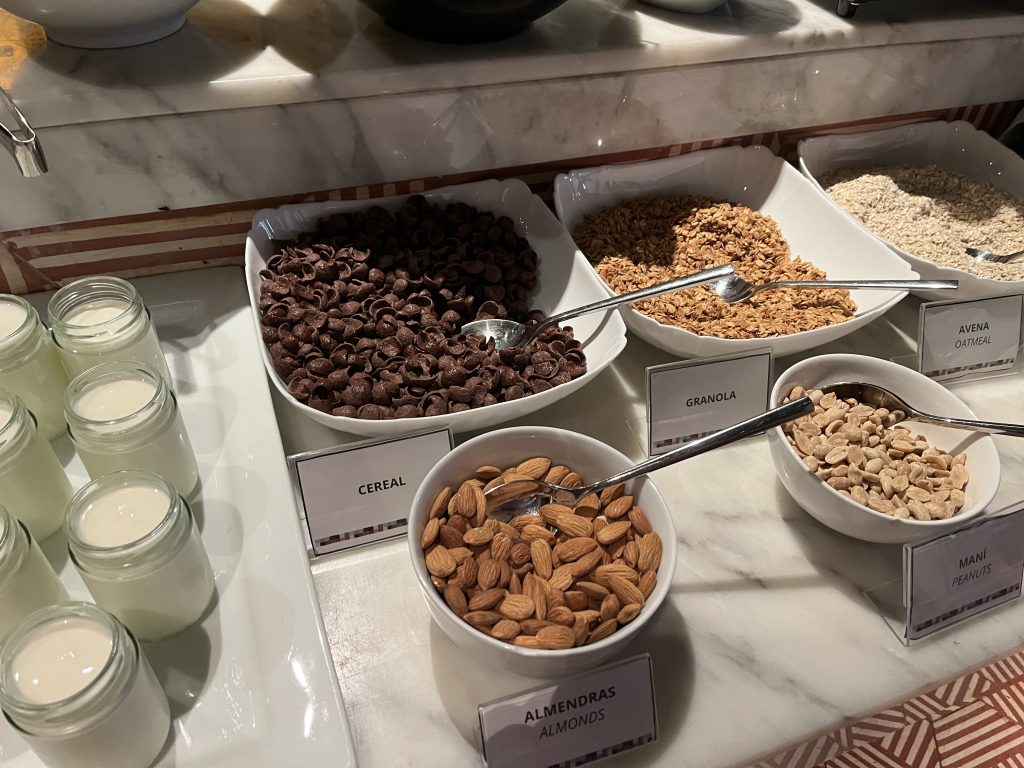
I saw some signage targeted at Sebastiaan:
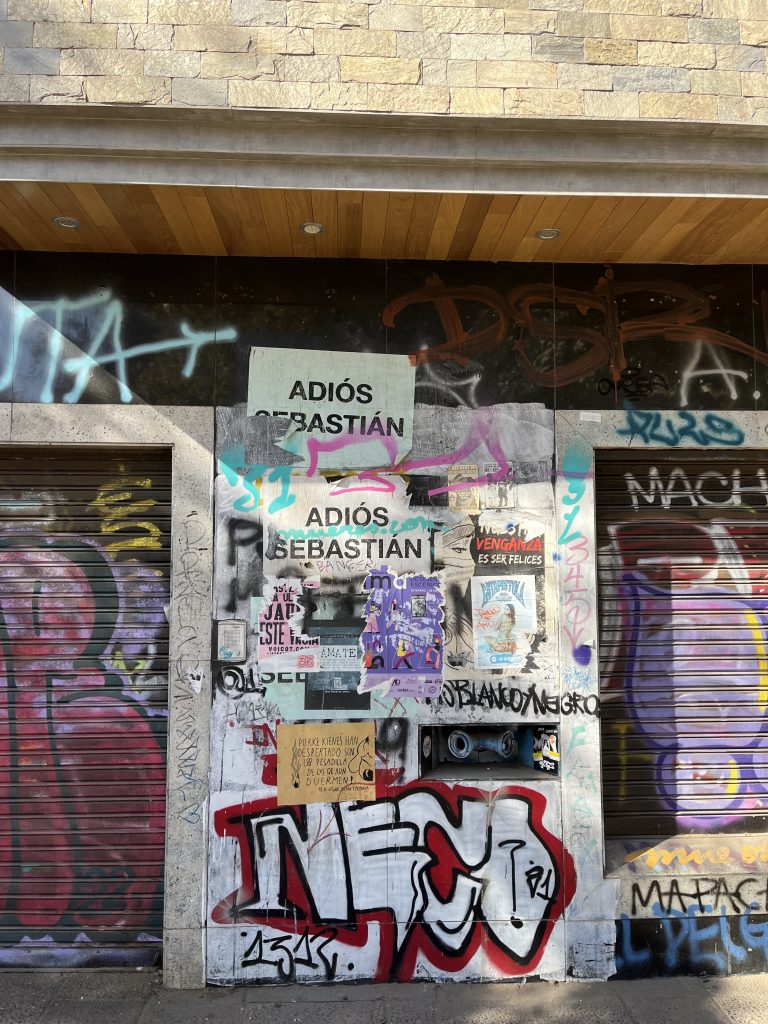
Nice of them to wish him well on his trip back to the US!
To effectively explore Santiago, one should definitely obtain a bip! card. Subway fare is about CLP$700 with free transfers, and I was unable to use up CLP$20000 in 2 days despite taking the subway as much as possible (even just one stop, on occasion). The card must be loaded up with cash, and CLP$10000 is definitely enough to get started with, as you can always add more but you cannot get a refund.
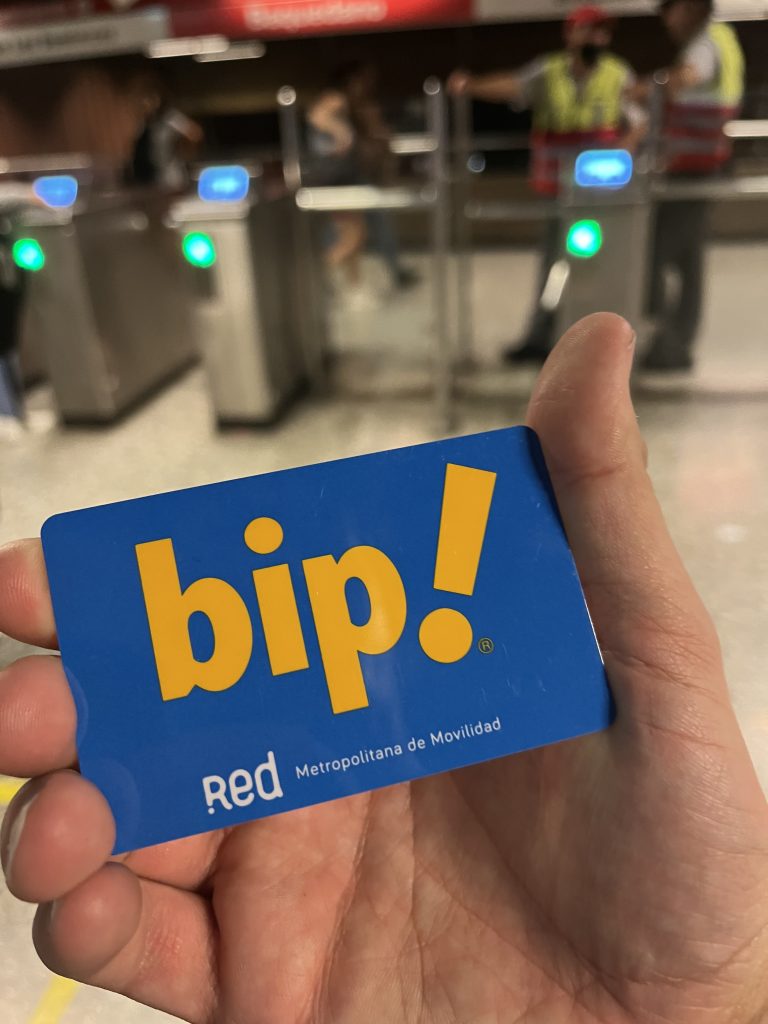
I’m a little weird about subway systems. (I love them.) I think Santiago’s one of the better ones I’ve used, though the only competition in Latin America I’ve tried is the Mexico City subway. The lines I used in Santiago had headways of small single-digit minutes, so I barely had to wait. The platforms were all exceptionally clean.
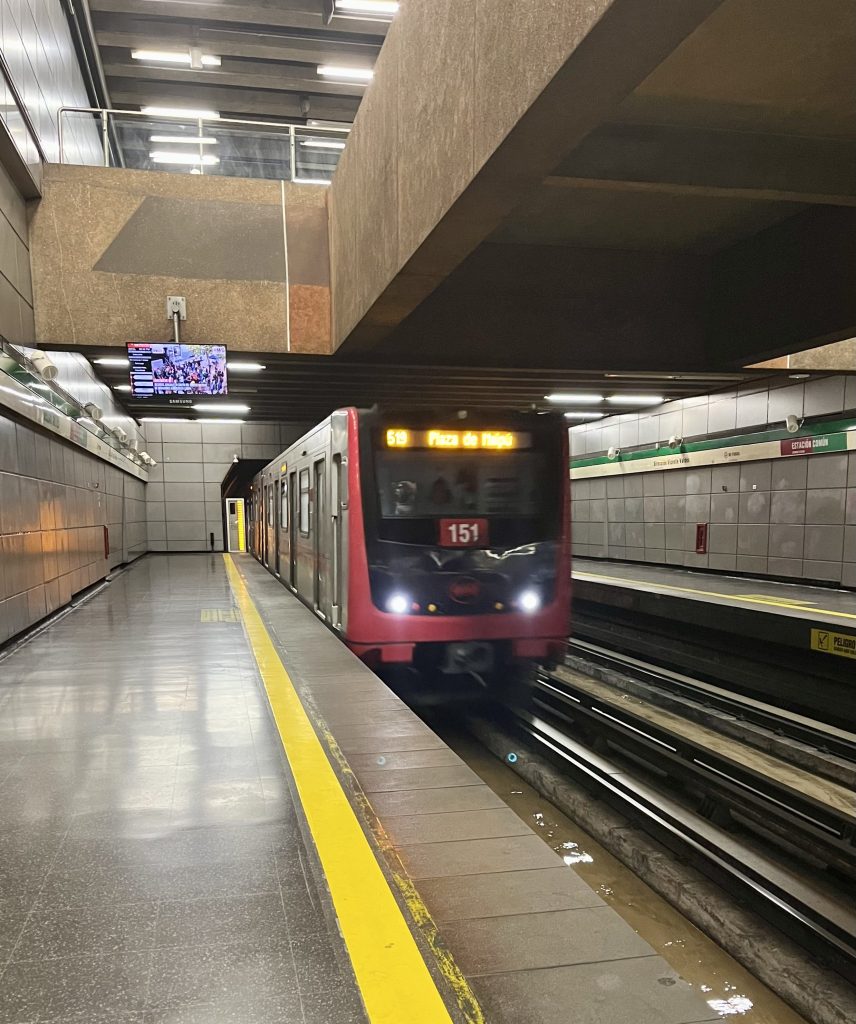
They use rubber-tired train cars, which might make things a bit quieter? Subway purists don’t @ me.
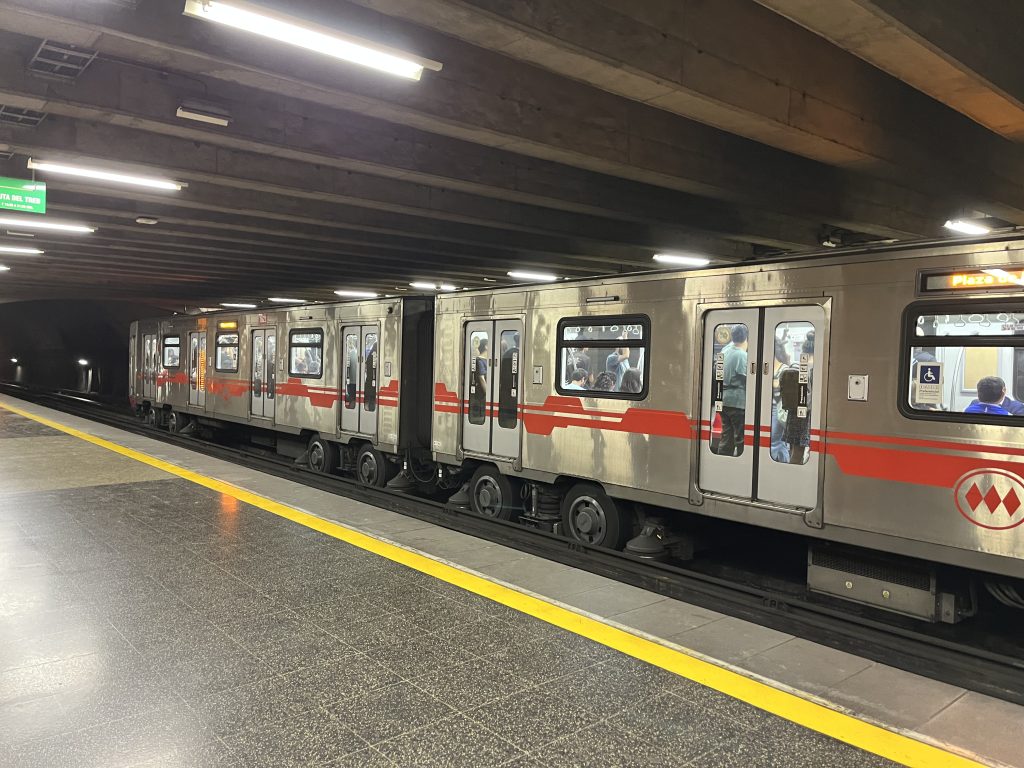
My initial plan for the day (funicular followed by cablecar) was foiled… by the fact it was Monday. They don’t, like, say they’re closed anywhere online. You just have to show up and find out I guess.
Instead, I went up in a tall building to see Santiago! The Sky Costanera tower is the second-tallest in Latin America, and the view drives home how close the Andes are. (And how much smog there is, yikes.)
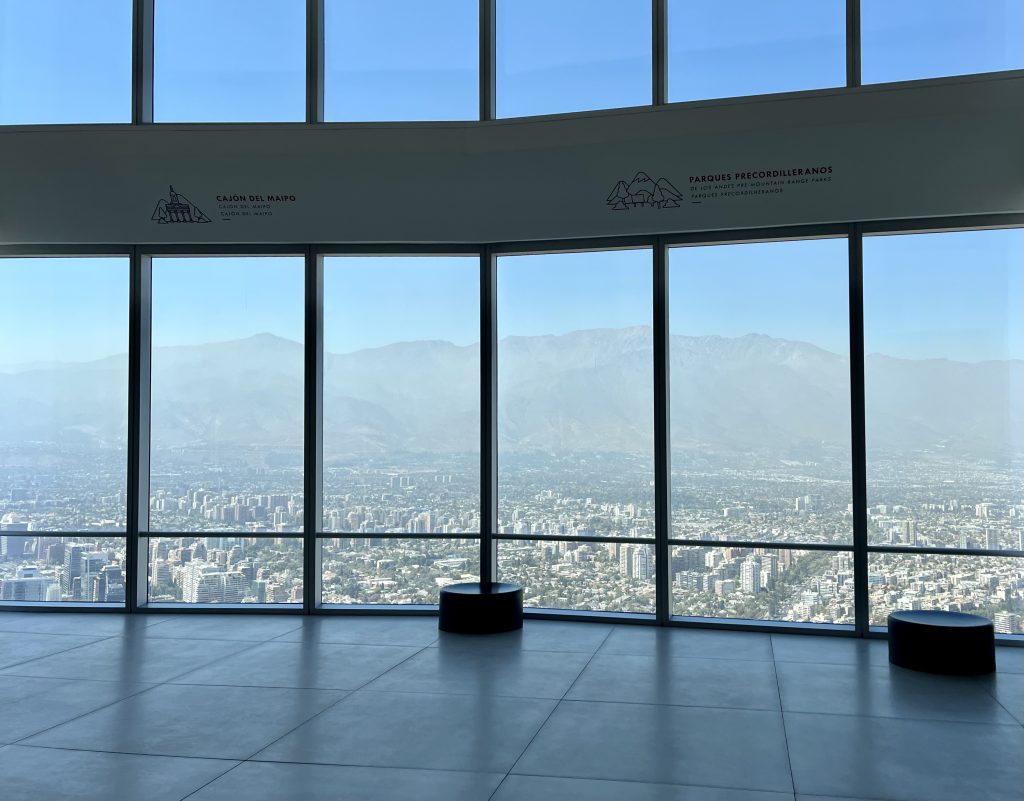
Descending from the tower drops you off in the mall, which is vibing like nobody told them “Millennials are killing the shopping mall.” I don’t remember the last time I saw a line in a mall food court.
I didn’t need to do much shopping (not going to need the fall/winter collection back in Tucson), so I took the subway over to Puente Cal y Canto to visit the Mercado Central. I guess I dithered too long at the Sky Costanera, because the market seemed to be closing up for the day. Fortunately, around the corner was a counter-serve restaurant with a line down the block.
Not just any restaurant: an empanadery! Emporio Zunino has been serving empanadas for most of its 93 years in business, despite the canned pasta sauce on the shelves for atmosphere. Here, no rules but those of commerce dictate your empanada consumption, nor how you store them after purchase. A brown paper package tied up with string seems to be standard.
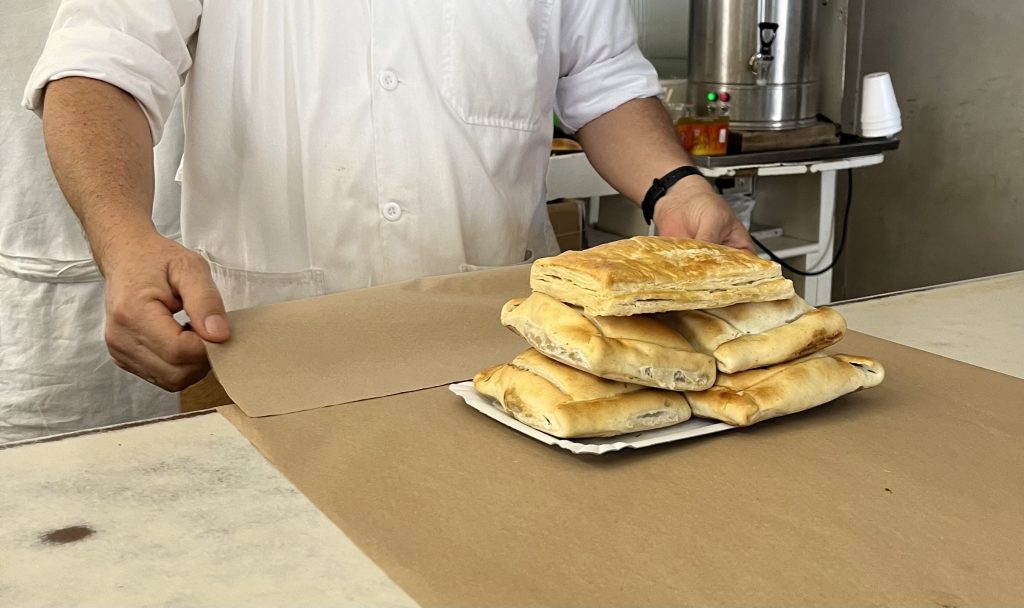
Next, I metro’d back towards the Plaza de Armas and tried to go to the Postal and Telegraphy Museum, but it was closed without explanation. Darn. Cool central post office though!
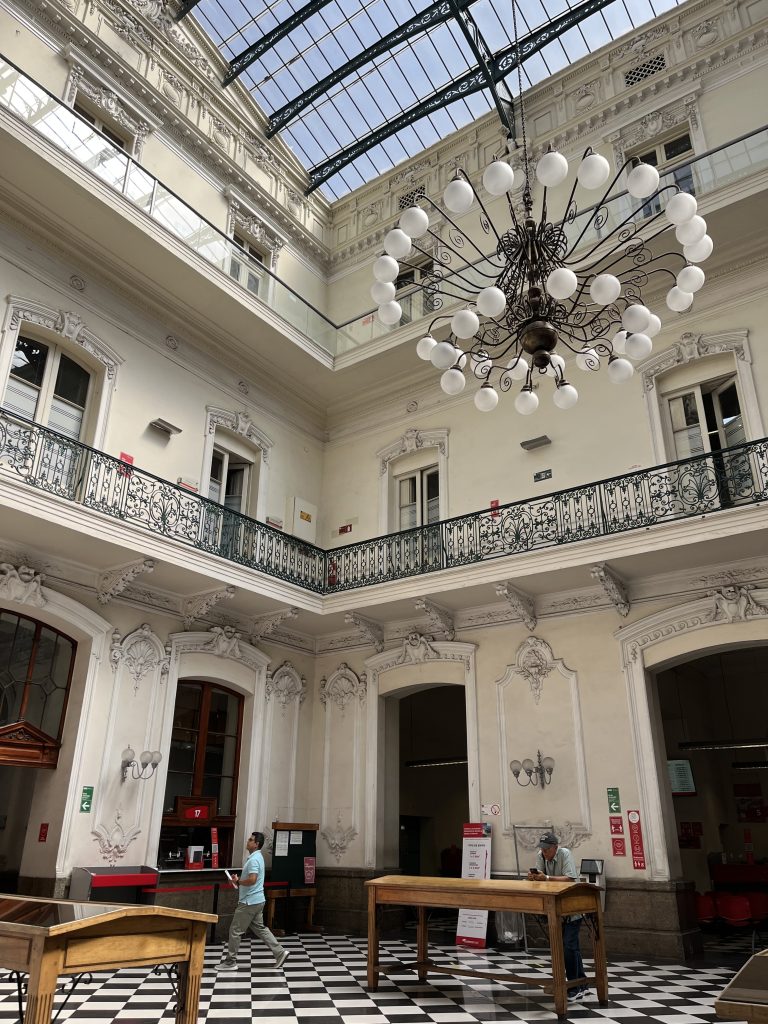
It’s right across from the Santiago Cathedral, which is a sight worth seeing.
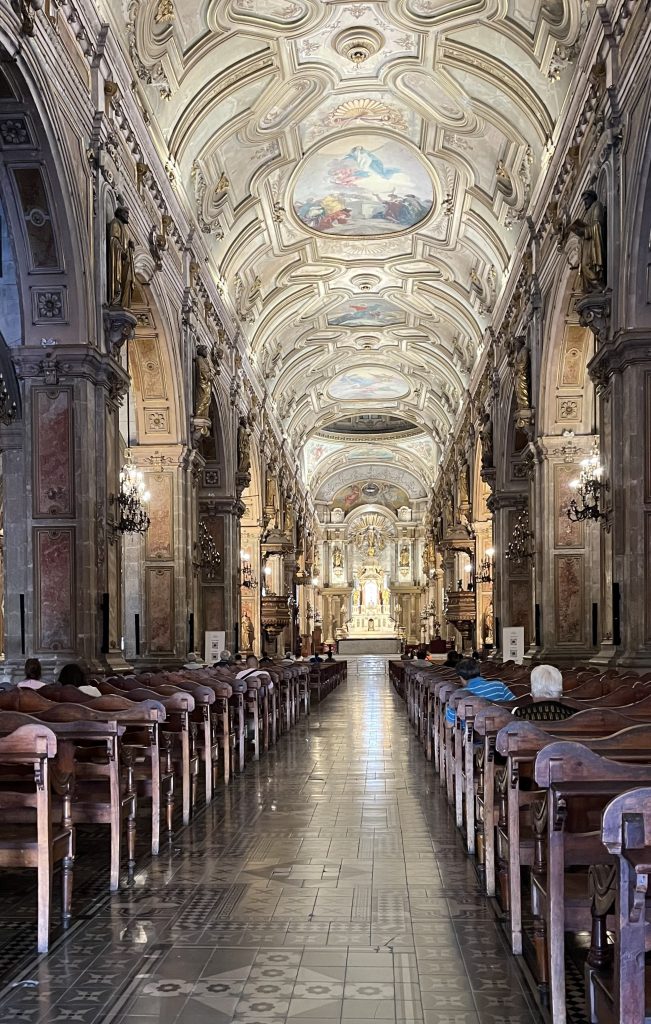
Don’t go expecting any holy water, though.
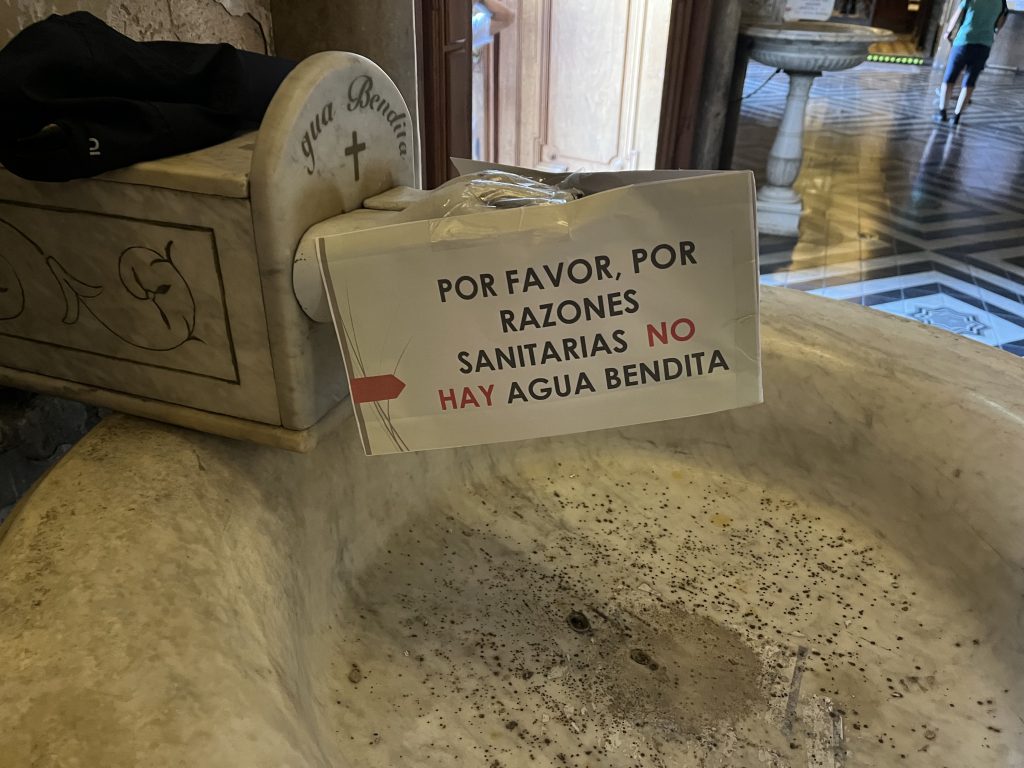
Things were uneventful at the Plaza de Armas on Monday, but there were still cops around. Peep the green and white van with the crossed rifles of the carabineros.
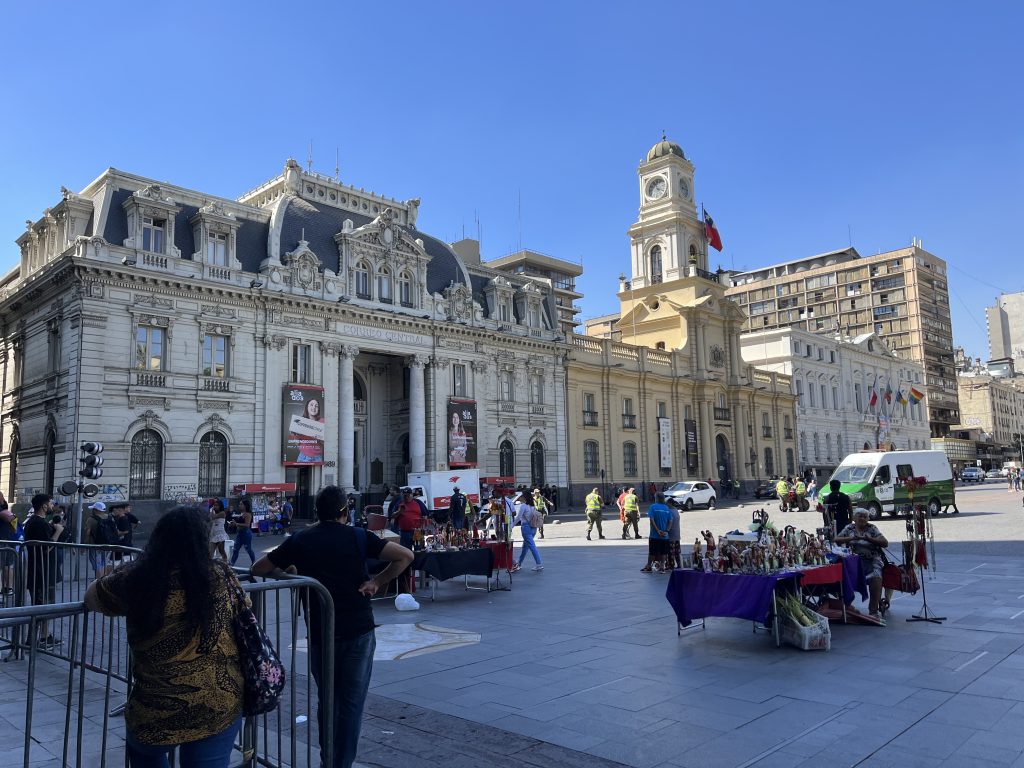
By this time I figured I’d give the funicular another try. (They said they were opening later.)
The buildings for the endpoints of the funicular on Cerro San Cristobal were designed by the same Luciano Kulczewski that did my hotel. Neat!
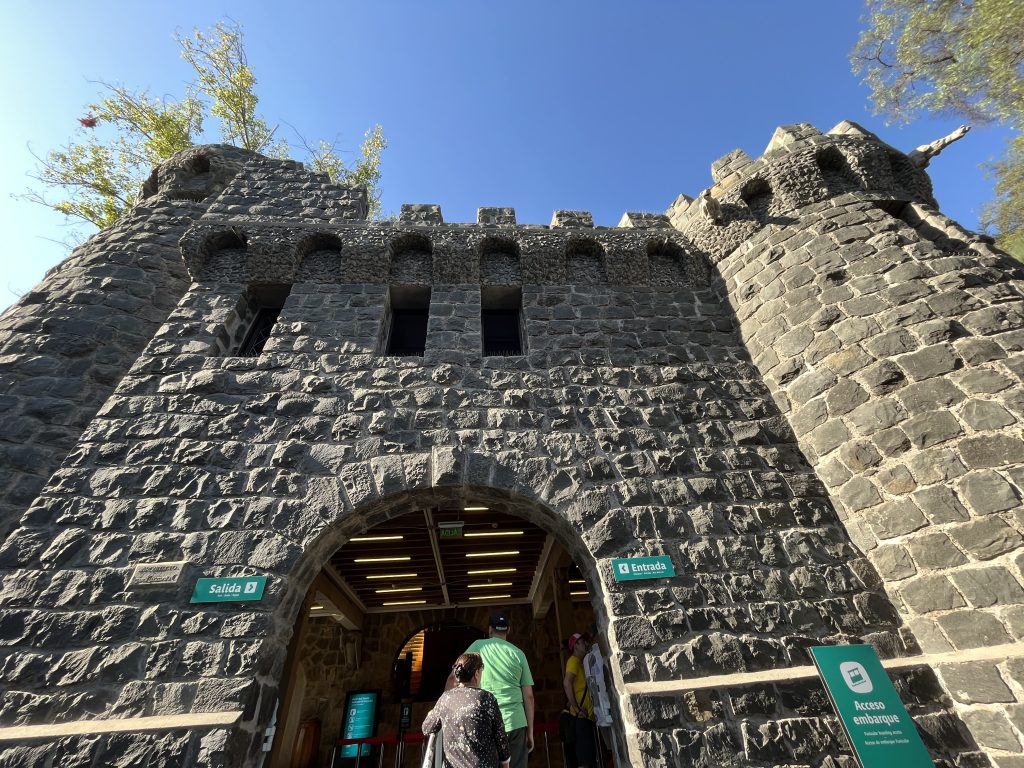
You get a good view on the ride, but, of course, it’s better at the top.
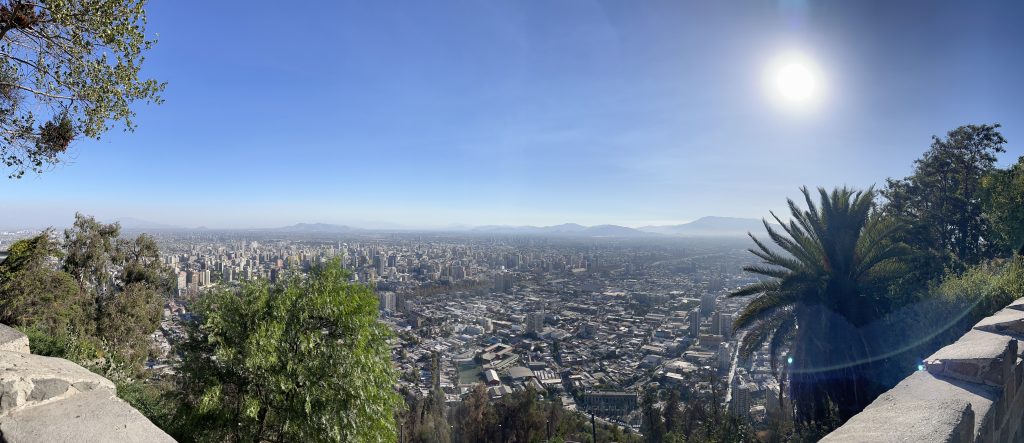
The “thing to do” according to MagAO-X Chilean Cultural Attaché Dr. Susana Henriquez is to get mote con huesillo. This drink of peach nectar with cooked wheat berries and stewed whole peaches is by far the most unexpected (least expected?) of the Chilean foods I tried. It’s good, though!
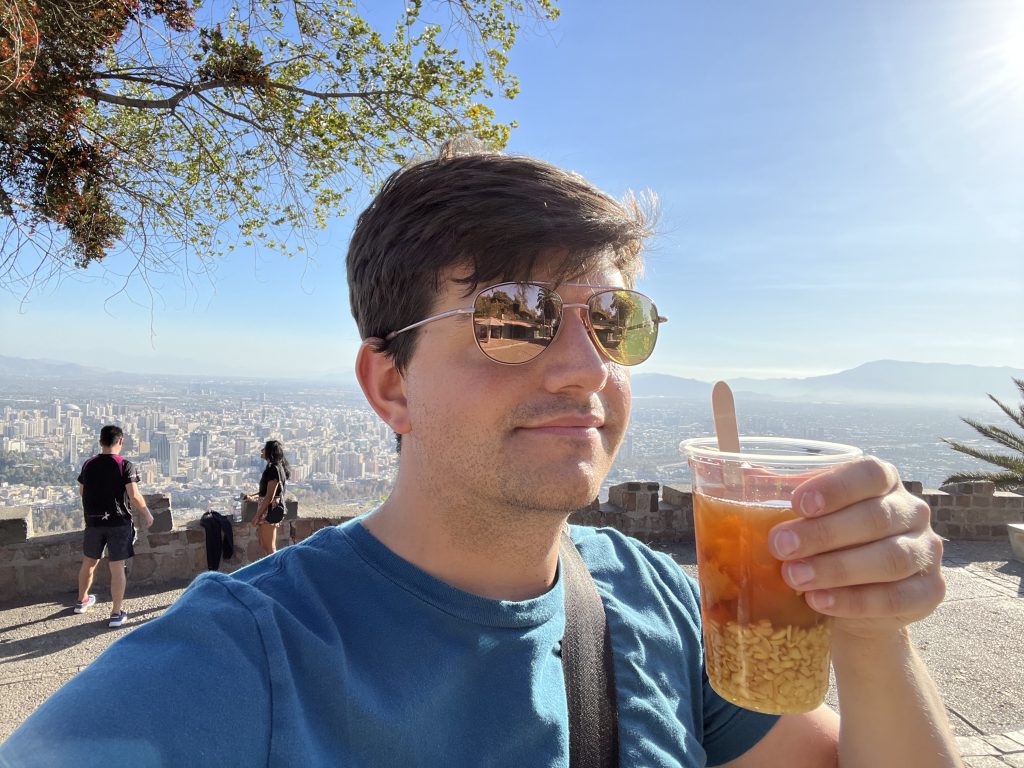
The wait for the ride back down was made immeasurably better by the appearance of a funicular funicucat.
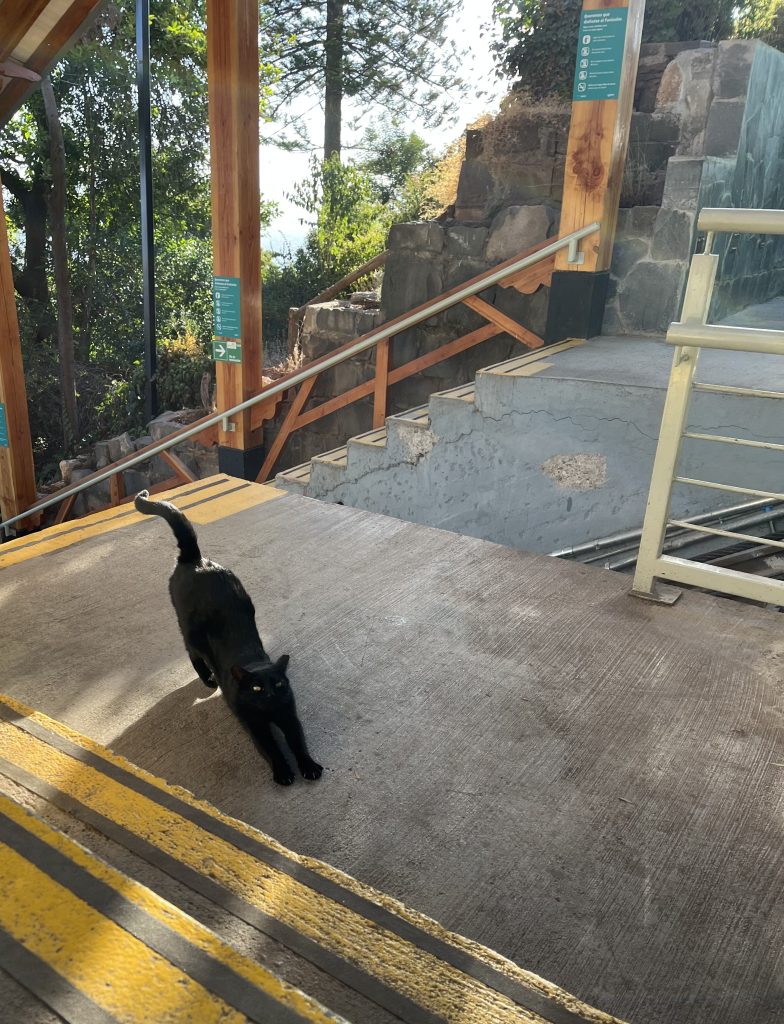
The funicular operator spent his five minute break petting and loving on the cat, which was very sweet.
Dinner was non-notable, so it’s a good thing I had my daily ice cream before it.
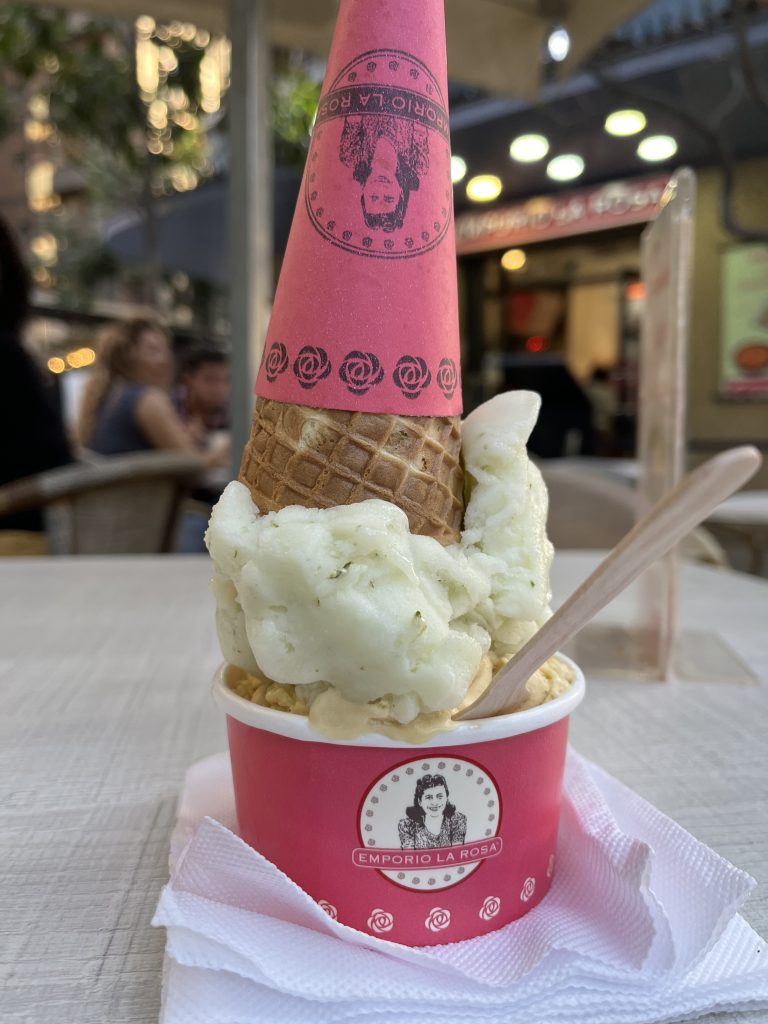
Lemon-mint-basil sorbet and lúcuma ice cream. What is a lúcuma? I have no idea.
Day 2:
Time to say goodbye… just kidding! My flight isn’t until 11:00 P.M.
Since it was Tuesday, some museums were open. I went to the Museo de Bellas Artes (at the eponymous metro stop).
It is very hard to be aggressively postmodern in curatorial practice when your whole collection is paintings of old white dudes by old white dudes, but they did their best—by removing all the frames and space between the pictures and writing overwrought interpretive text.
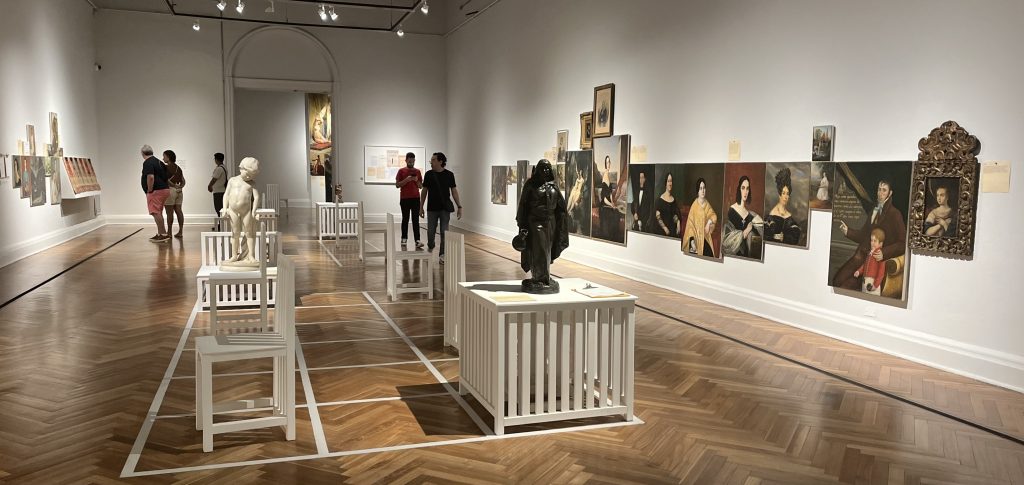
This piece had a lot of chaotic energy.
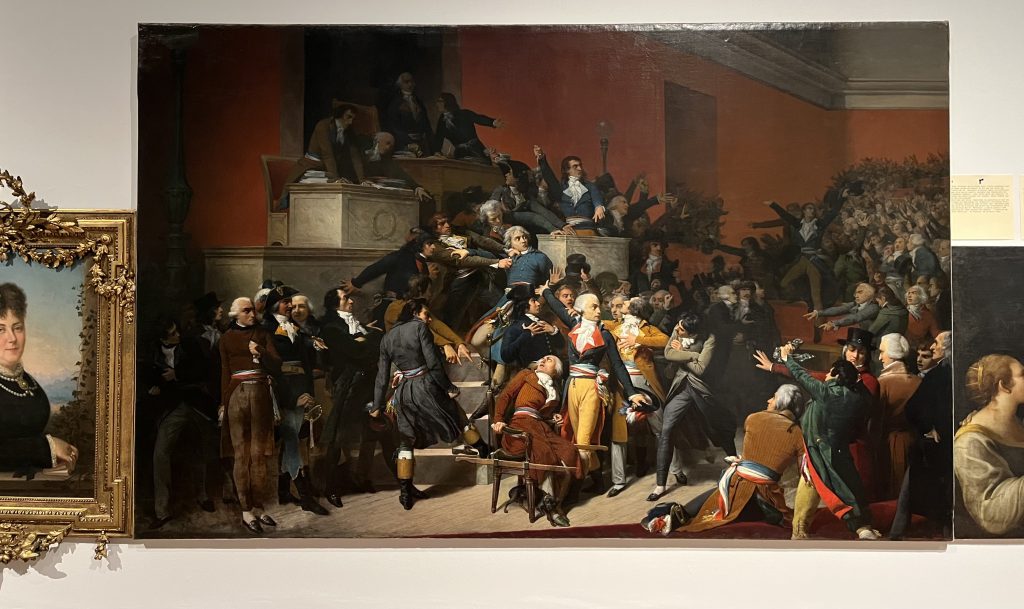
I am a sucker for a steel and glass roof, ask anyone.
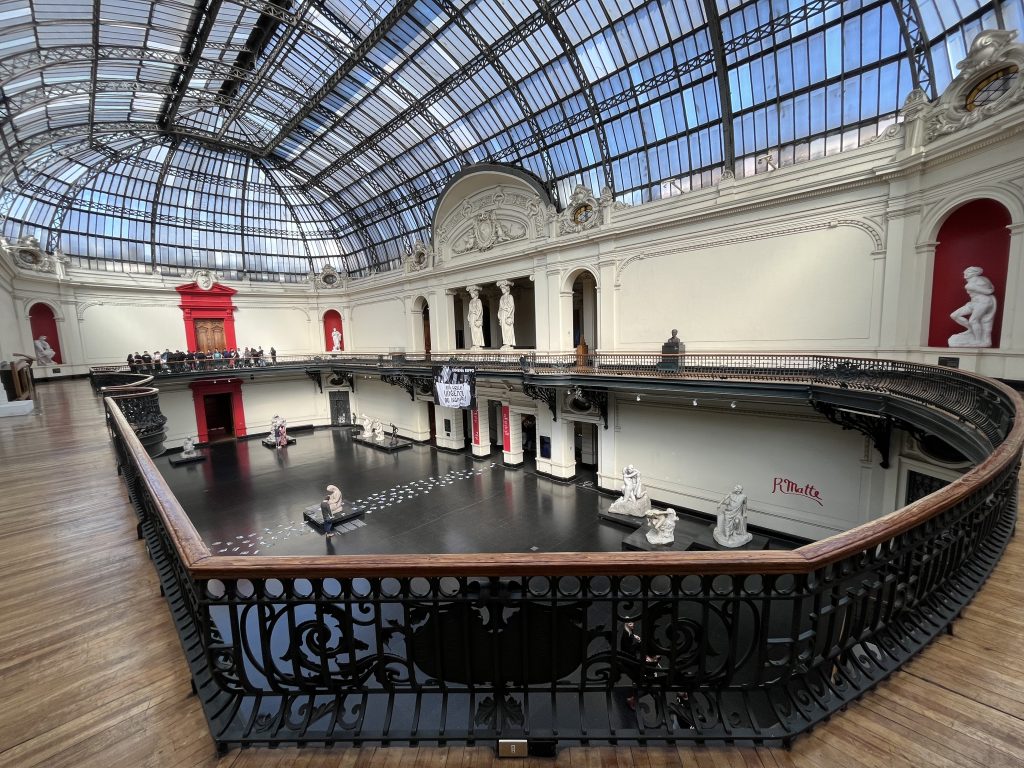
After, I went to Centro de Artesanias Santa Lucia, which had some handicraft vendors. They all take credit cards, but the inter-bank fees add up (~$1 per transaction, for me). Dr. Lauren Schatz charged me with replacing her now-worn shoulder bag, which I was fortunately able to do. I also got my mom some little decorative doodads for her birthday.
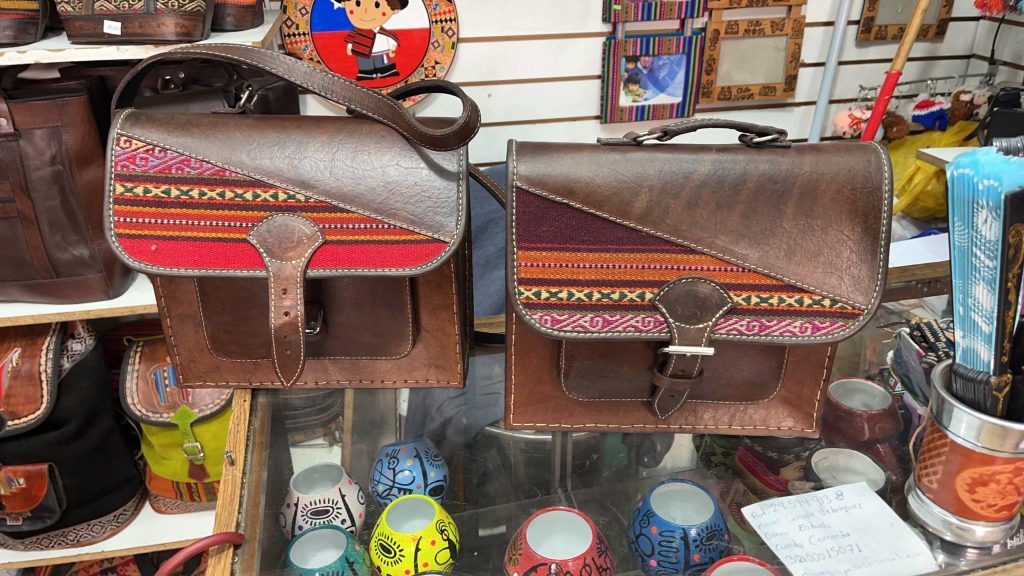
Aside: I like to check Atlas Obscura before visiting a new place, because it sometimes brings up stuff that’s a little offbeat or different from the normal tourist highlights. This time, the only quirky Atlas Obscura sight I saw was this building:
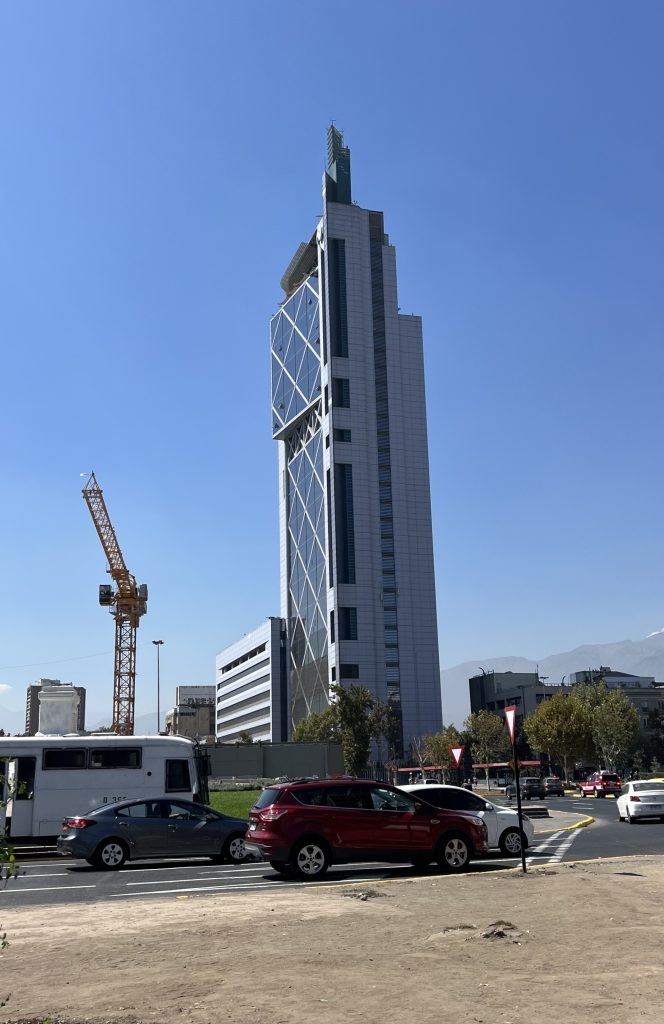
It looks like a (now out-of-date) cell phone, and the cell phone company has their offices there. Get it?
Next stop was the Museo de la Memoria y los Derechos Humanos, a.k.a. the Museum of Heavy Stuff, Man. Floor 1 is the coup, floor 2 is the aftermath. (If you’re prone to sometimes getting big sad, get ready.)
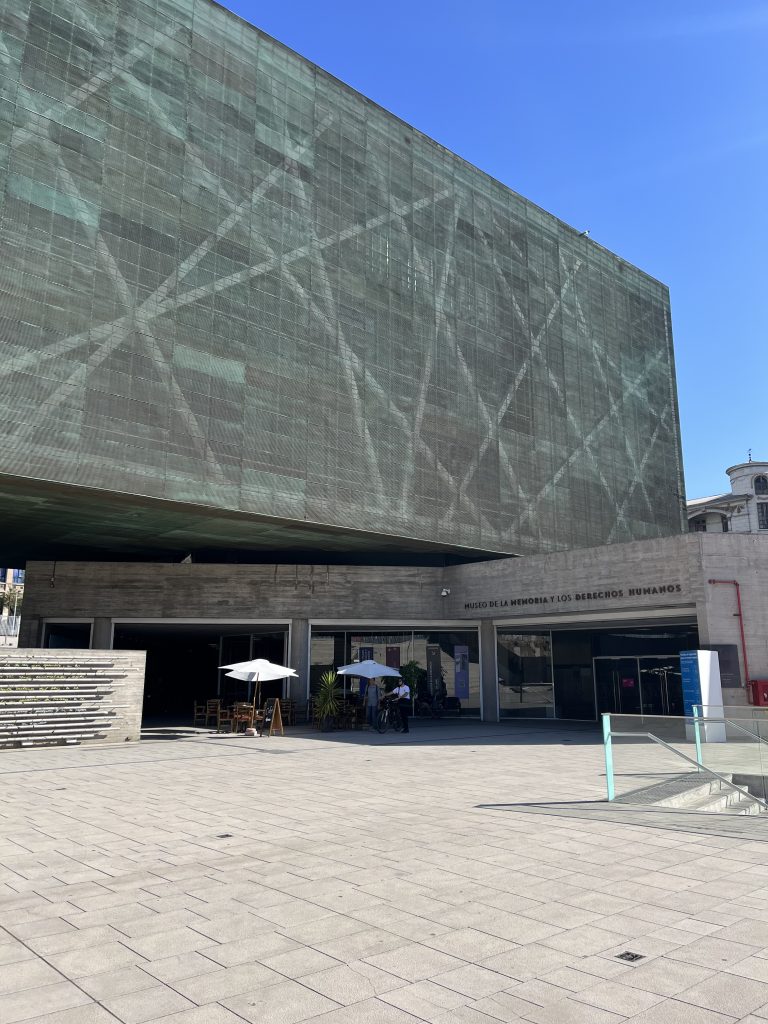
Definitely worth a visit, even though only about half the interpretive text is translated into English.
I had time to fit in one more museum-y thing, so I took the Metro to La Moneda. La Moneda is short for Palacio de la Moneda (literally “palace of money,” a.k.a. the mint), but it is the presidential palace that was shelled in the coup, where Allende was killed, and where Pinochet set up shop after.
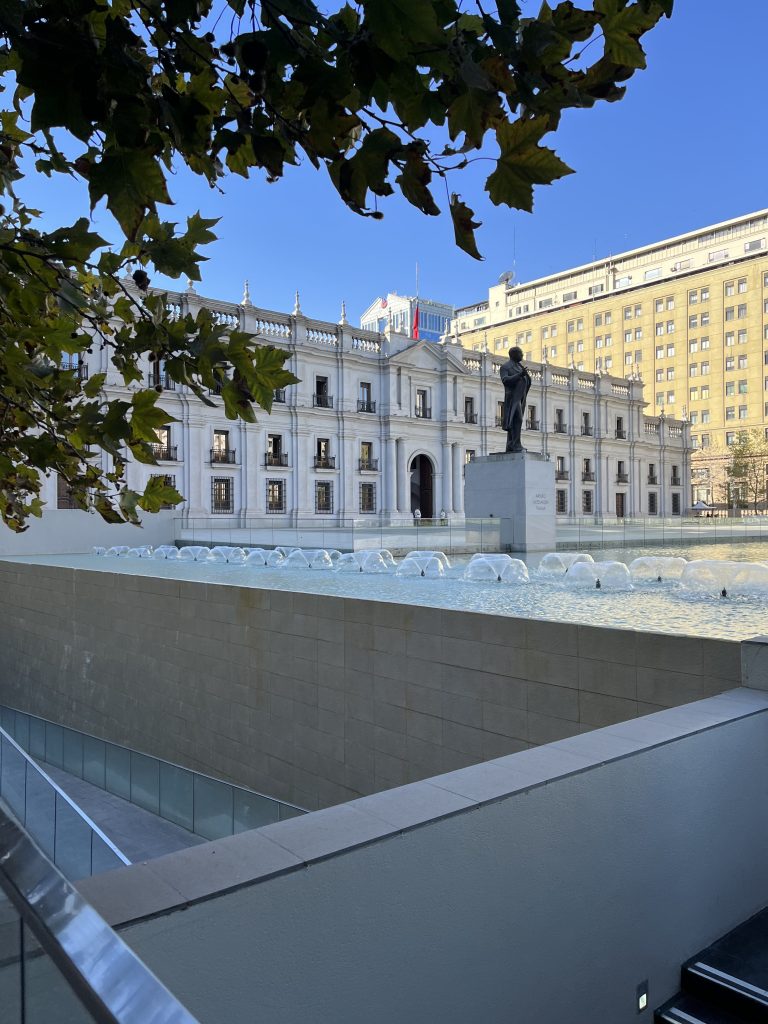
Today it is still the seat of government, but there’s a large cultural center built underneath it. (Unclear if it reused excavations from Pinochet’s bunker. Probably best not to ask.)
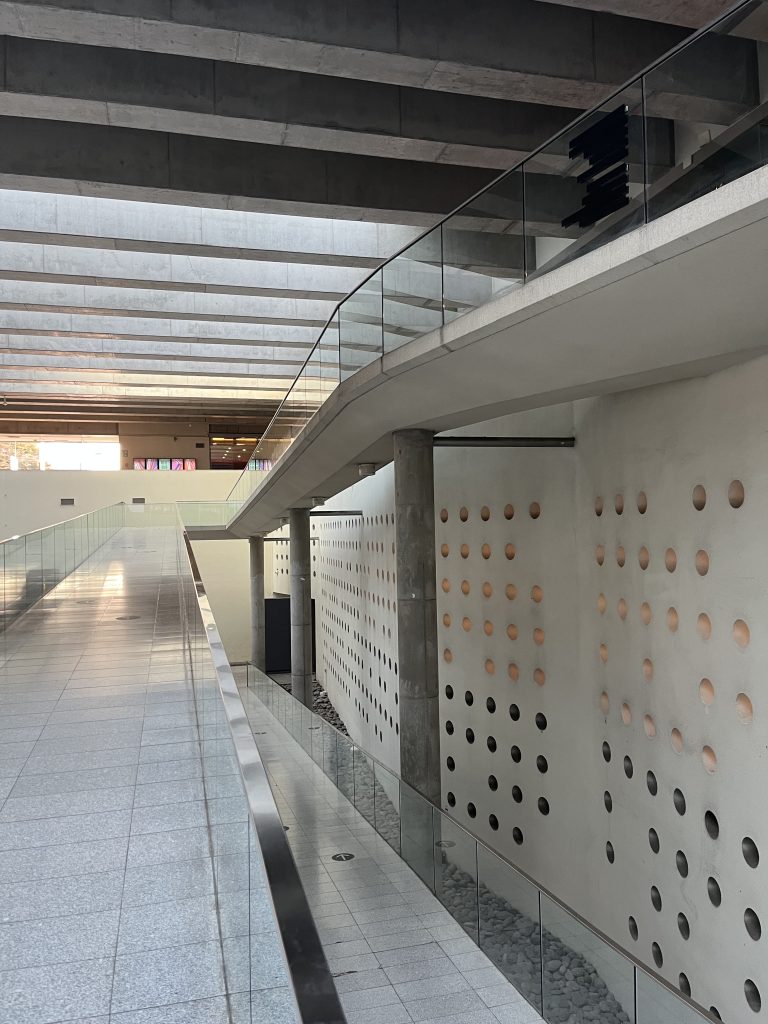
In comparison with the U.S. it’s kind of hard to imagine a three story free museum operating under the White House with no metal detectors, no bag checks, and no security guards to speak of.
It probably also wouldn’t have a sculpture of a couple of people totally boinking outside the front door.
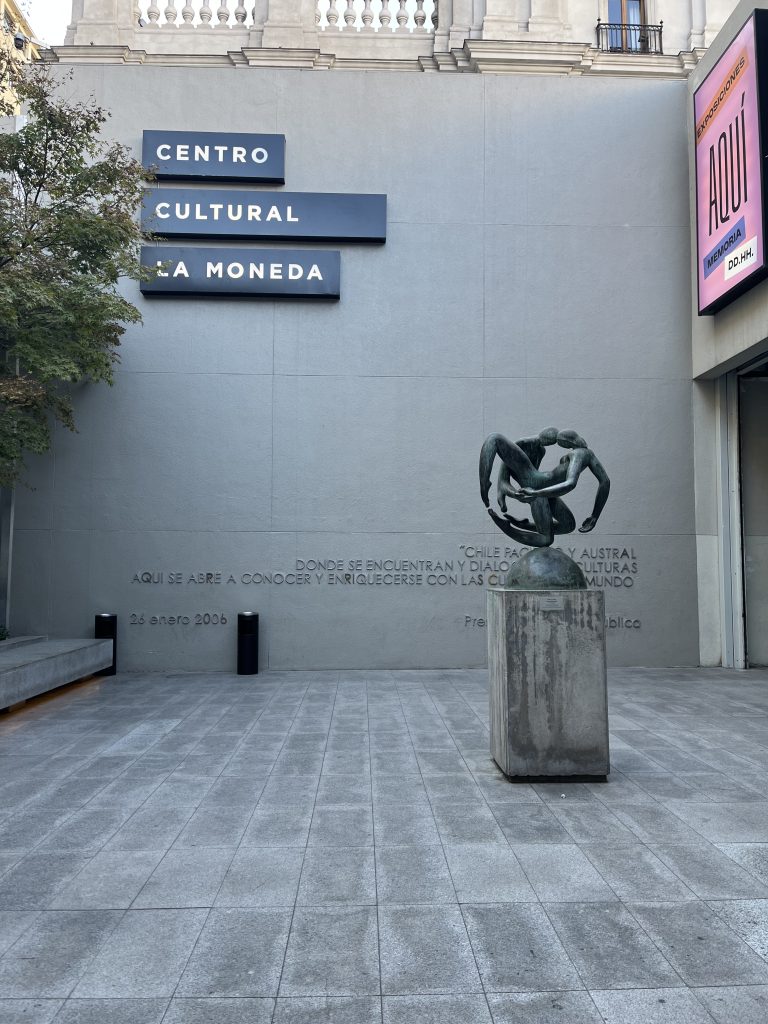
The breeze cooperated and I was able to get this picture of a Chilean flag the size of a building.
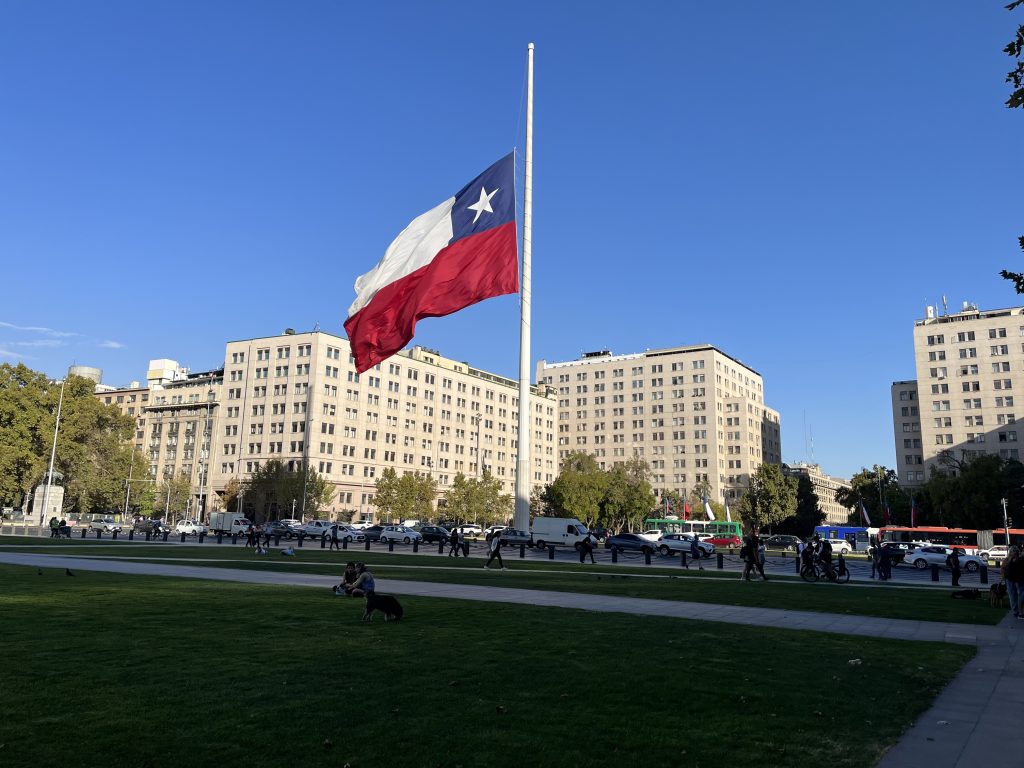
Okay, last stop before my airport transfer: this shop in Barrio Lastarria selling cones of french fries with various toppings had a line every time I walked past it. Their slogan is “papitas para ser feliz” (little potatoes to make you happy) and I totally agree with their mission.
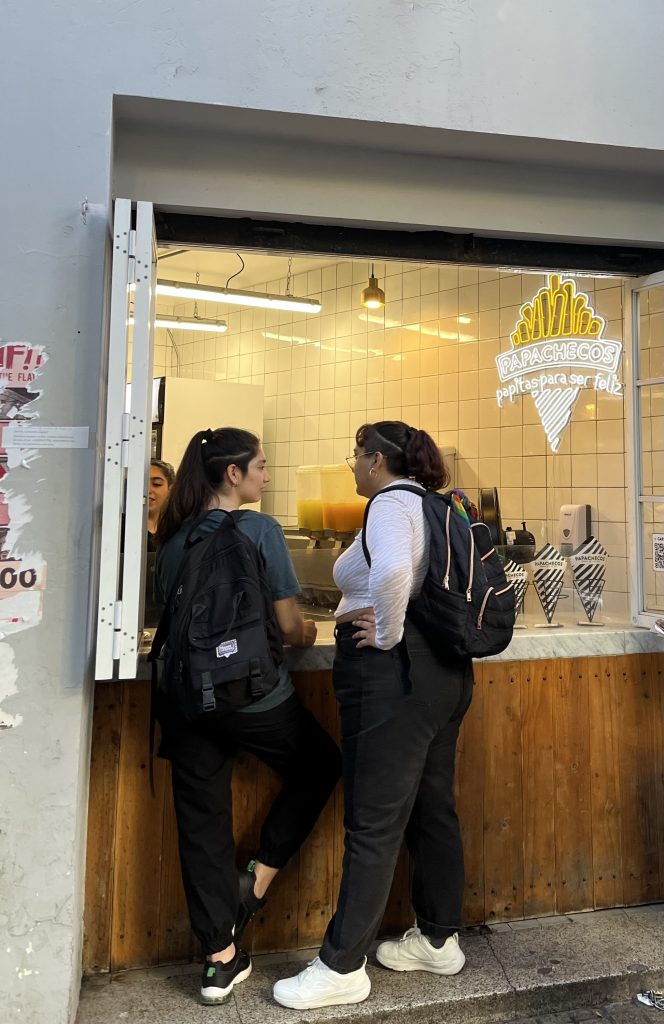
Finally, happiness in a cone. (Cat unrelated.)
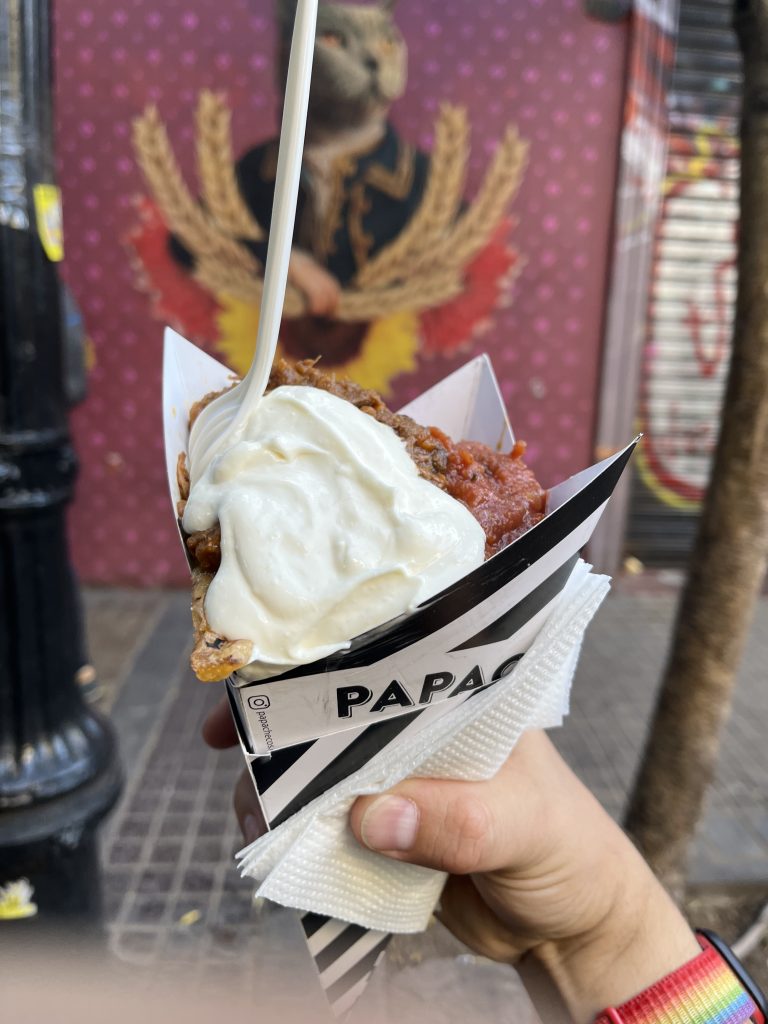
I got ketchup casero (homemade ketchup), mayonesa al ajo (garlic mayo), and mechada (a local sort of stewed barbecued beef).
Okay, now it’s time to go to the airport. Once there, I got one or two more pisco sours for the road. (They also improve the blogging.)
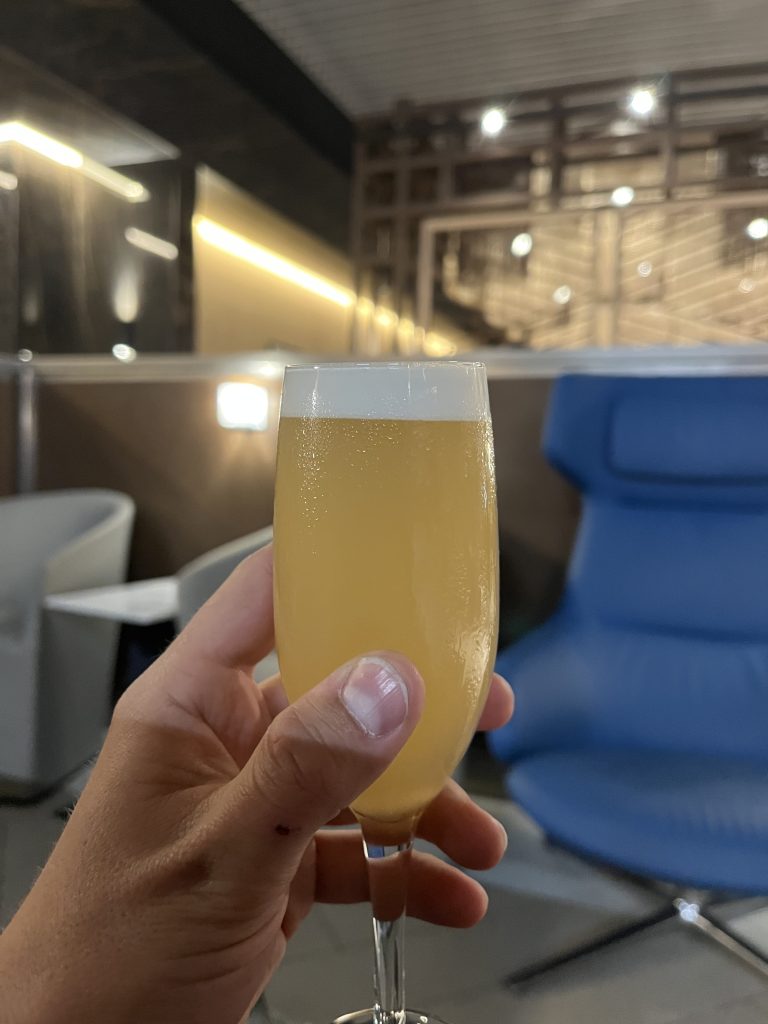
Song of the Day
Existing in the liminal space of bonus blogs, I don’t think I need a gig story for this one. But the message is sound, and I’m tired as heck.